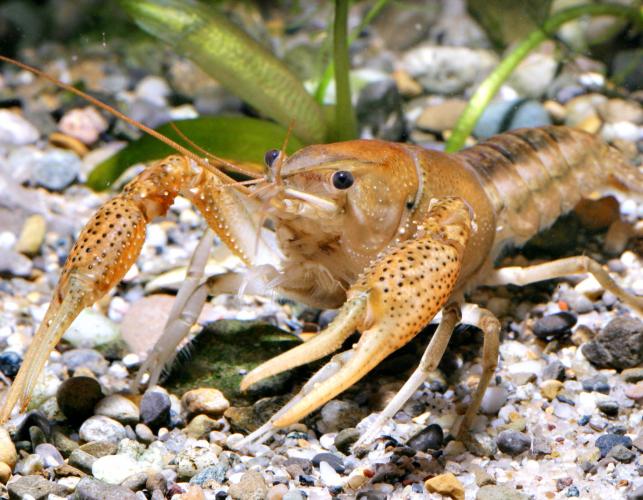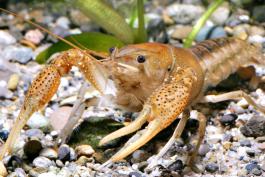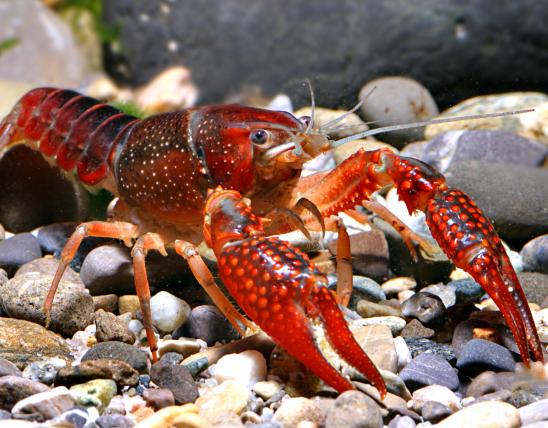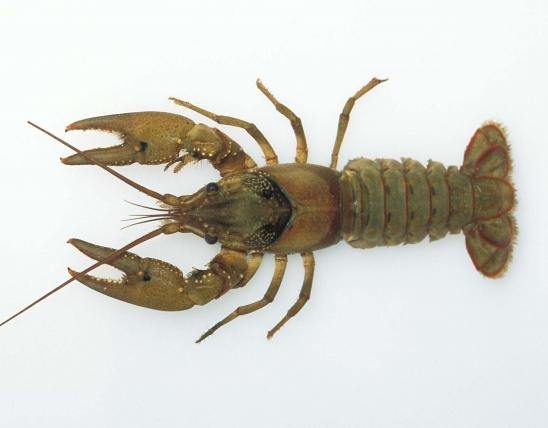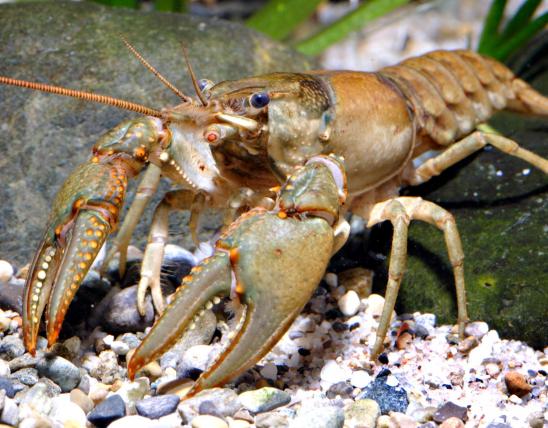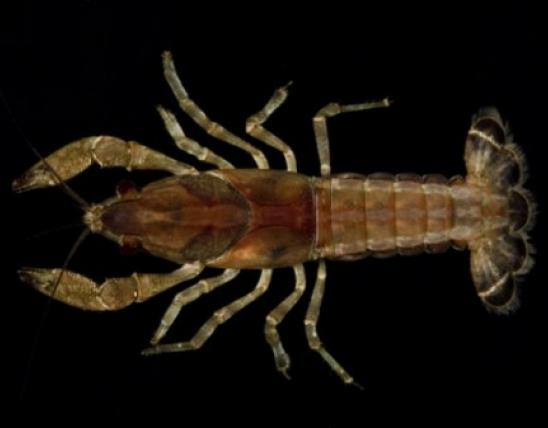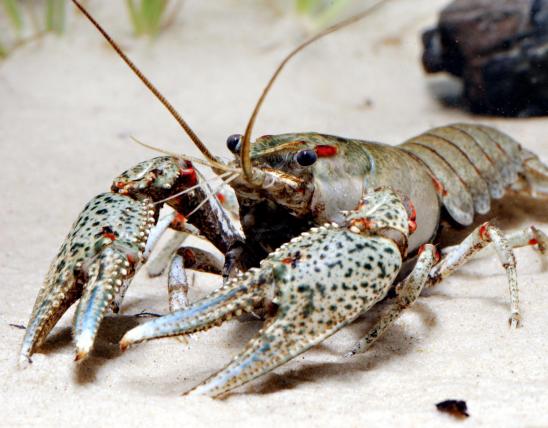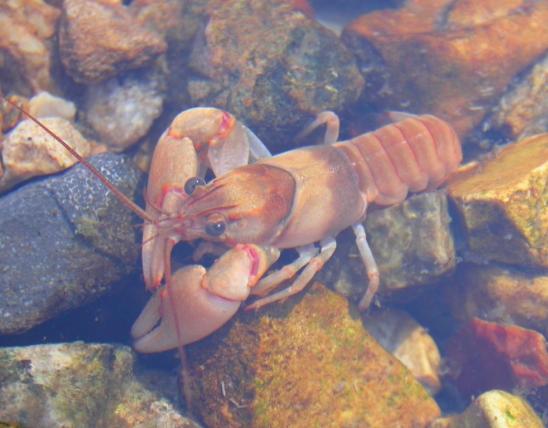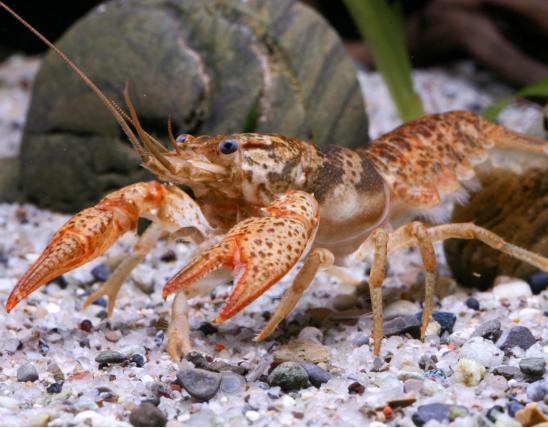
Adult White River crawfish are usually a deep burgundy red with a black V-shaped stripe on the abdomen. Juveniles are gray with dark spots scattered over the carapace. The pincers are long and narrow. The carapace is separated at its middle by a space (areola). The carapace is conspicuously granular (roughened) in adults.
Similar species: The White River crawfish resembles the red swamp crawfish, but the latter lacks an areola. Also, young of the red swamp crawfish are usually plain or striped, not spotted.
Adult length: about 2½ to 4 inches.
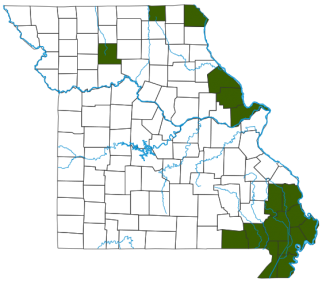
This crayfish occurs commonly in the lowlands of southeastern Missouri, and northward along the floodplain of the Mississippi River to Clark County. It has recently been introduced into several locations throughout the state, where it is considered invasive.
Habitat and Conservation
Inhabits sloughs, swamps, and sluggish lowland streams and ditches. Also found in natural lakes along the floodplains of streams. It frequently burrows to escape drying (in summer) and spends winter in burrows.
Food
Crayfish are generally omnivores, eating a wide variety of plant and animal materials.
Status
A common, widespread crayfish whose range extends along the Atlantic coast from Maine to Georgia, along the Gulf Coast from the Florida panhandle to Mexico, and north in the central Mississippi Valley and in the southern Great Lakes from Minnesota to Ohio.
Although it is native to Missouri's Bootheel and up the Mississippi River, it has been spread outside its native range to several other locations across the state, and in those places it is considered invasive.
Life Cycle
Males and females apparently pair up in the fall prior to entering burrows, where mating and overwintering occur. It seems that reproduction may occur at any time throughout the year. Details of the life history are not known, even though this is a common and widespread species.
Human Connections
This species is used as food and as bait in Louisiana and probably in some other states, and it probably has some potential for use in aquaculture in Missouri.
It can be hard for people to understand how a native Missouri species can also be invasive. The political borders of our state mean little to animals confined to aquatic habitats. Because crayfish and other aquatic animals usually cannot travel over land, they are often confined to specific river systems. When people move them artificially from one body of water to another that they didn't belong in naturally, they can become invasive, outcompeting or displacing the organisms native to that aquatic system.
Ecosystem Connections
Crayfish are an important link in the food chain between plants and other animals, breaking down plant materials that are resistant to decay. They are an important food for many animals that occur around or in water, including fish, snakes, turtles, wading birds, raccoons, and mink.
